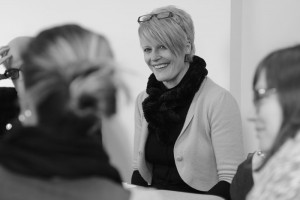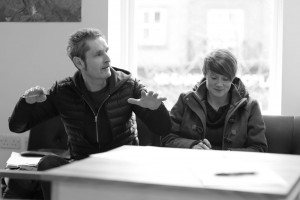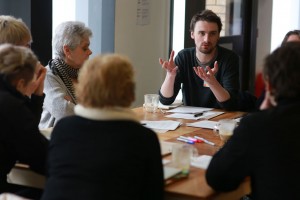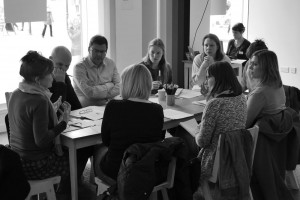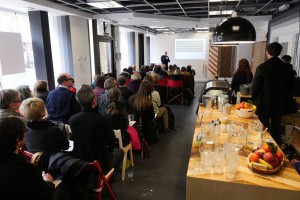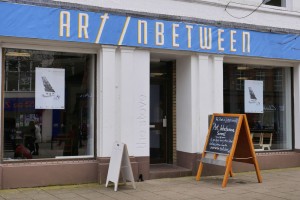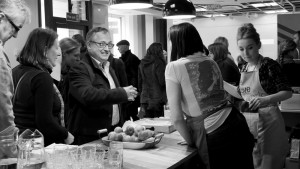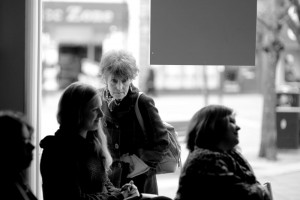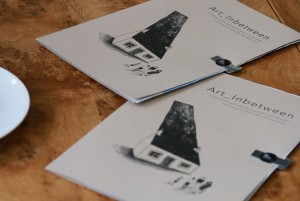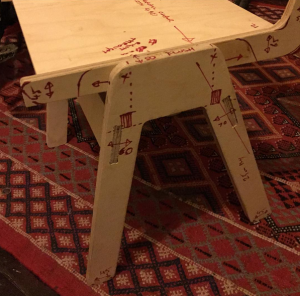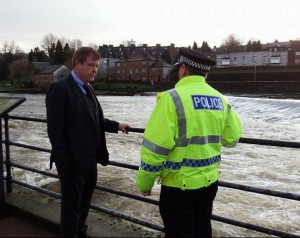Jo Hodges and Robbie Coleman were appointed as artists-in-residence to the Art_Inbetween project – they began their engagement with the project at the Art_Inbetween Summit and are now working with ideas formed at the event…..
‘We’re delighted to have been commissioned to make new work in response to the ideas and themes discussed at the Art_Inbetween Summit held at The Stove 25/26 Feb.
The cross sectorial summit brought together people working in ‘Inbetween’ places – towns, villages and other rural areas, to recognise, re-articulate and explore the distinctiveness of the contemporary rural arts scene and to share experience and knowledge. We went to the summit with the idea of keeping our minds open and listening, but the discussions were such, that it was hard to maintain a watching brief and we ended up getting fully stuck in.
The workshops were open formats for conversations around; art as activism, the potential for creating new structures and ways of working in Inbetween places, strategies, communication and networking in rural contexts, cultural high streets and challenging traditional methods of evaluation. Download the Art_Inbetween Summit Pack
In practice the workshops extended their reach to question the language and concepts that were used as starting points. There was much talk around what constituted ‘the rural’ and what that might mean for contemporary arts practice. Were new narratives / visions needed and what role could artists have in facilitating/creating these? There was a realization that there was a lack of clear definition around these ideas and terms and we’ve been left with an interest in delving deeper; what is it about this context that creates possibilities for new forms of art practice?
Other recurring themes of interest to us were the discussions on democracy and participation and how art may make visible/curate/ engage with civic processes. This fed into the general consensus that art practices and processes can act as active agents in thinking about and creating positive social change. We were also interested in the conversations around working collaboratively using models of co-creation across sectors / disciplines and the need to take risks in order to move into new territories of practice with transformational possibilities.
There was much talk around ideas of developing new models for evaluation of arts projects that were more relevant to the rural context and how evaluation could be built in as a creative element of any project rather than something to be done ‘later’. There was discussion about networks of various sorts and how vital they were in contributing to the resilience of ‘Inbetween’ arts practice.
The second day was for more focused work with partner organisations from The Highlands, Wales and Northumberland. We were led in this by Sam Cassels who moved participants at a hair-raising pace using specific questions and provocations in order to quickly arrive at ideas for projects that had the potential for being developed further.
The summit was buzzing with people, conversations and ideas. It was hugely successful as a forum to share and engage with the issues in contemporary ‘Inbetween’ art practice and attracted delegates with a wide and deep interest in the subjects at hand from a range of contexts across the UK. The structure of ‘less presentations – more open discussion’ allowed for conversations to develop and commonalities to surface and be articulated.
From our point of view, as artists tasked with responding to the reach and vibrancy of these conversations, we are now starting to look for patterns, undercurrents, seams and overlaps. As a shared practice we don’t have a regular recurring methodology, but conduct conversations that evolve over time, gradually finding paths that lead us somewhere/nowhere. Currently we are at the beginning of that process.
Since the summit we have found ourselves looking at our own practice (shared and individual) and have realized that it straddles the conventional rural/urban divide in ways that we had not considered before, an area that we will try and explore and articulate as part of this commission.
We have been left with a palpable feeling of excitement about ways of working outside the urban, centralized setting and the potential for developing this model of integrated working in ‘Inbetween’ places. Our challenge now is navigate a route within this enormously rich and evolving context.’
To contact Jo and Robbie – please leave a comment on this blogpost or email [email protected]


